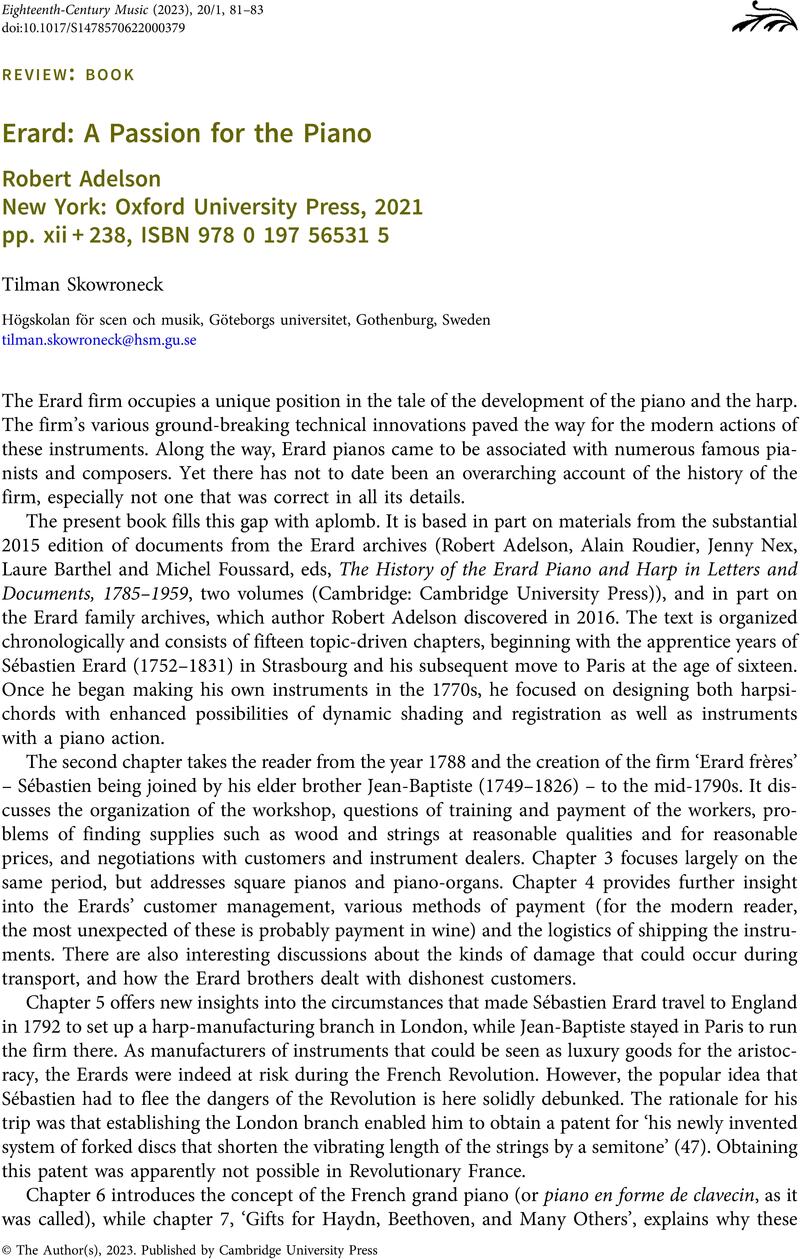No CrossRef data available.
Article contents
Erard: A Passion for the Piano Robert Adelson New York: Oxford University Press, 2021 pp. xii + 238, ISBN 978 0 197 56531 5
Review products
Erard: A Passion for the Piano Robert Adelson New York: Oxford University Press, 2021 pp. xii + 238, ISBN 978 0 197 56531 5
Published online by Cambridge University Press: 08 February 2023
Abstract
An abstract is not available for this content so a preview has been provided. Please use the Get access link above for information on how to access this content.

- Type
- Review: Book
- Information
- Copyright
- Copyright © The Author(s), 2023. Published by Cambridge University Press





